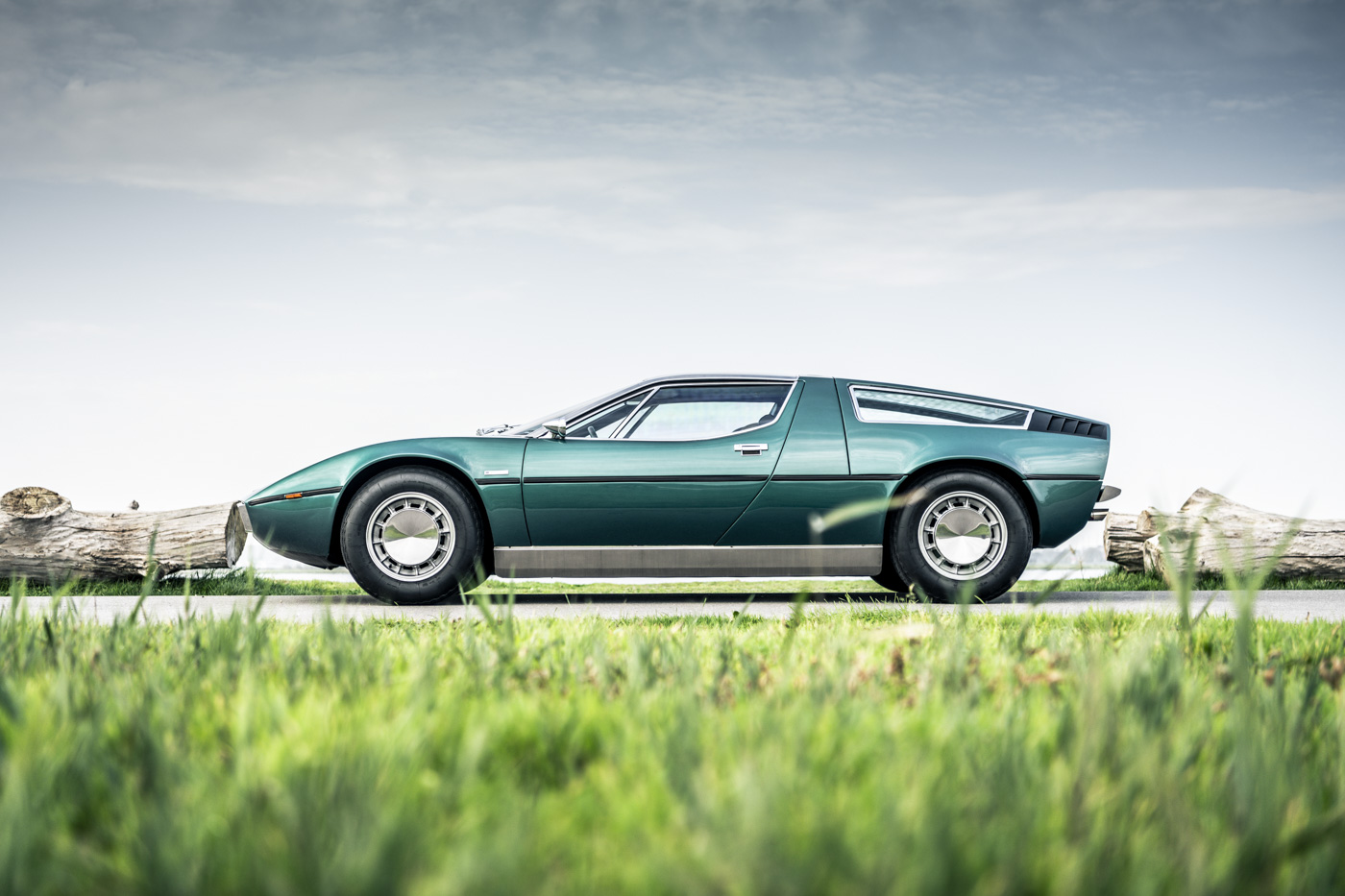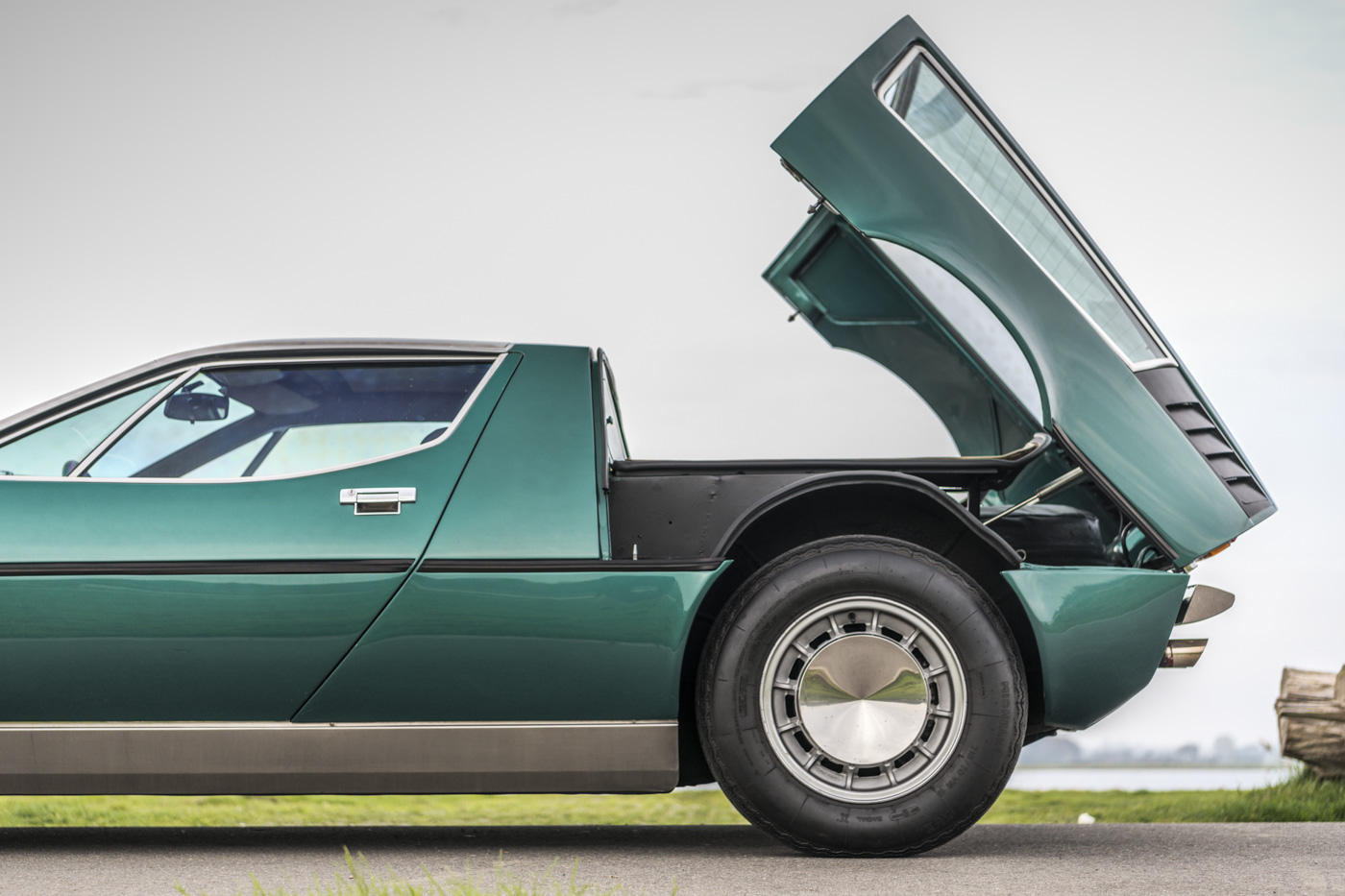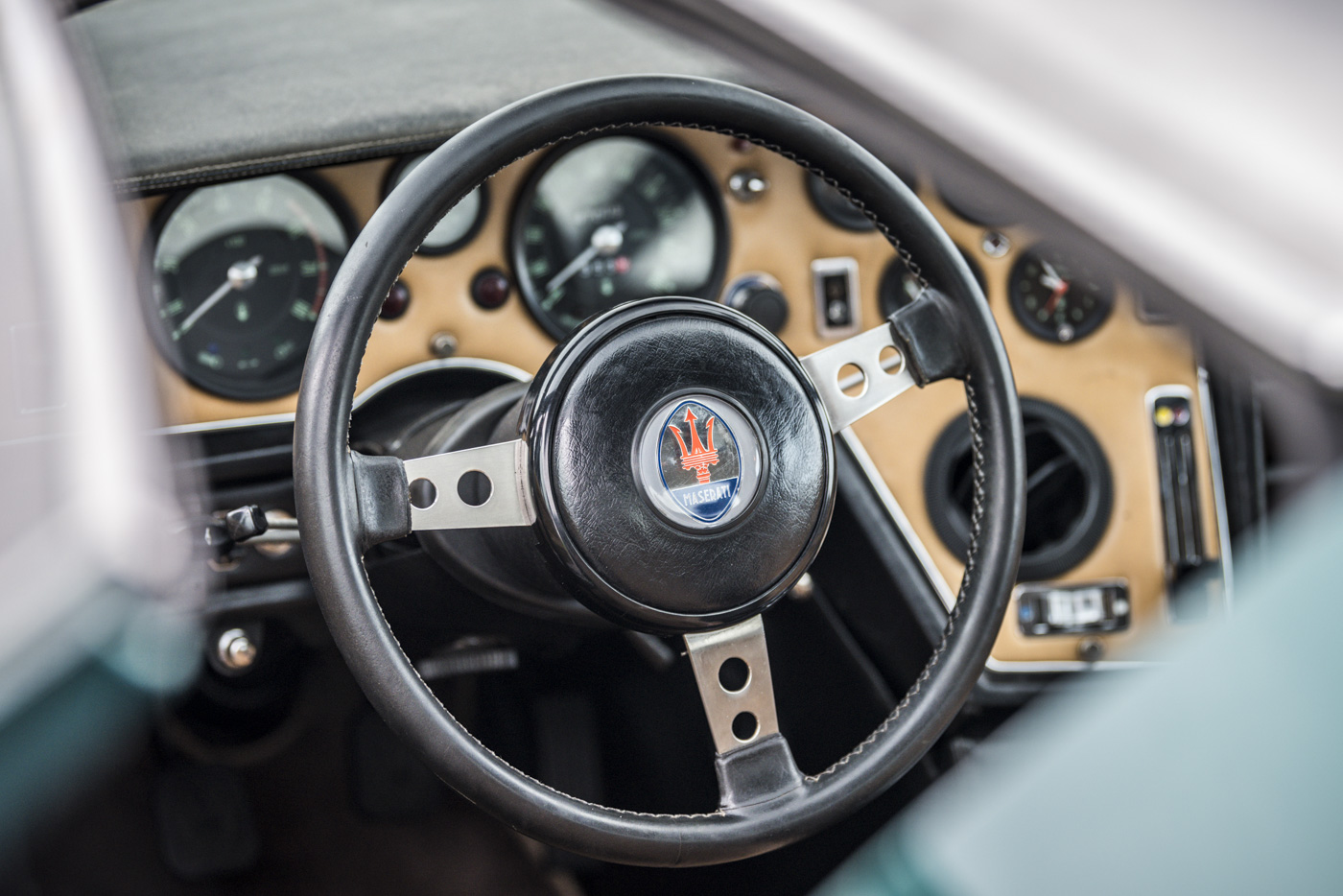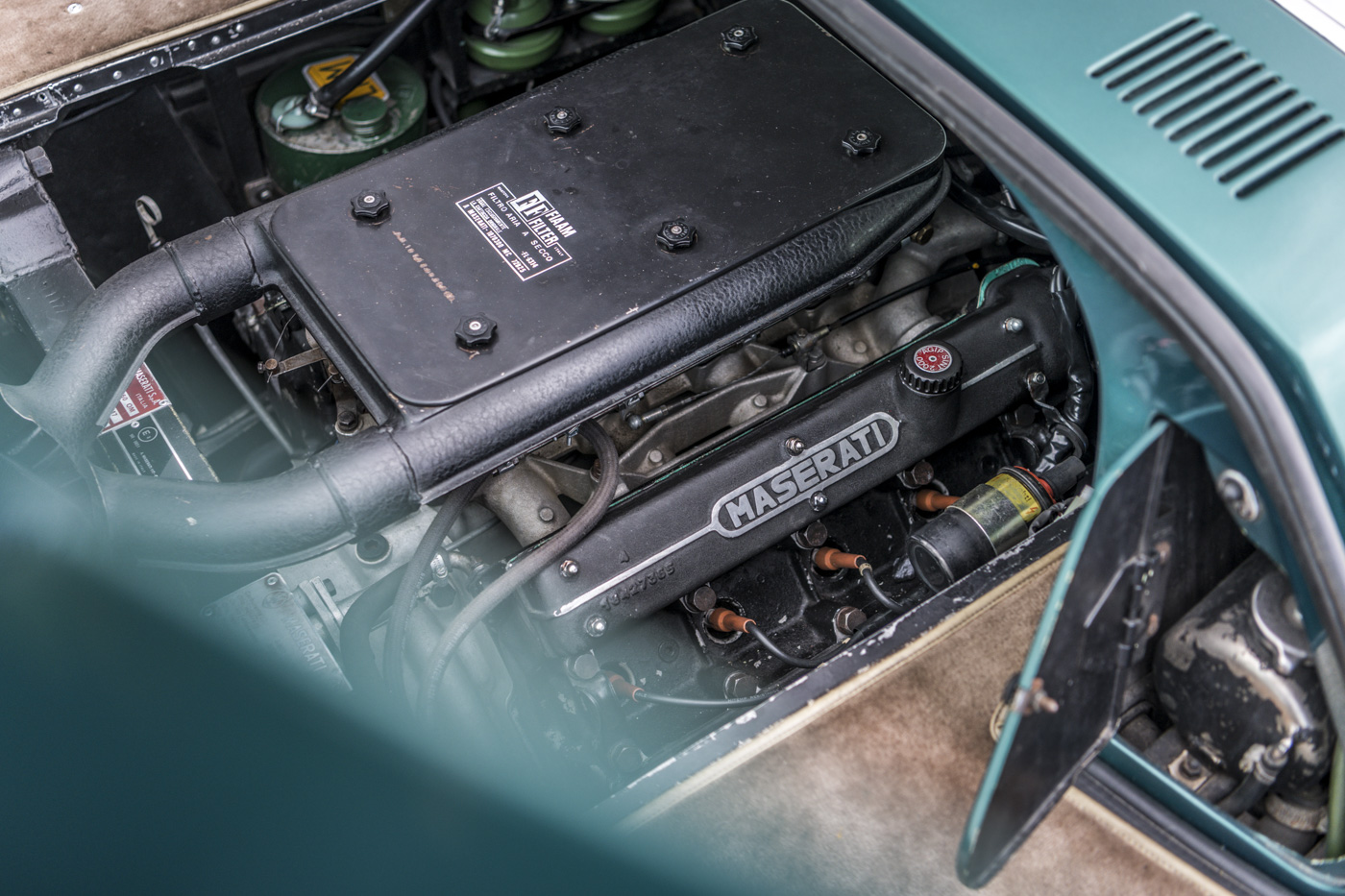Maserati Bora – Civilised Brute

A hoarse roar echoes through the tunnel walls. The ultra-low sports car, adorned with a trident on its nose, surges forward. We’re on the road with an Italian beauty from the wild seventies: the Maserati Bora.
In 1968, Citroën rescued the near-bankrupt Maserati from owner Adolfo Orsi. The two manufacturers had already been collaborating on the development of the Citroën SM. The sports car market was struggling, particularly due to tightening environmental and safety regulations in the crucial North American market, requiring massive investment. Maserati, as a small manufacturer, couldn’t keep up, but Citroën was happy to fund the effort. They had grand plans for Maserati, including technical component sharing and the introduction of new mid-engine sports cars to compete with Lamborghini’s Miura, De Tomaso’s Mangusta, and Ferrari’s Dino and upcoming Berlinetta Boxer (BB) and 308. Unlike the competition, the new Maseratis had to combine phenomenal performance with significant comfort—allowing owners to cover long distances without fatigue.
TIPO AM117: A NEW ERA
Project ‘Tipo AM117’ began in late 1968, with Maserati engineer Giulio Alfieri overseeing the technical aspects. The Bora’s design came from Giorgetto Giugiaro, who had recently founded ItalDesign. His vision resulted in an elegant, streamlined sports car. Maserati stipulated that the Bora should not appear aggressive, and the design deliverd on this. The mid-engine layout shifts the cockpit forward, while the expansive glass-covered engine bay tilts open in one piece. The prototype was ready in 1969, and in March 1971, the final Bora debuted at the Geneva Motor Show. The steel-bodied Bora boasts an exceptionally low drag coefficient of 0.30, thanks to its smooth panels and minimal frontal area. Its standout design feature is the unpainted stainless steel roof and A-pillars, lending it a targa-like aesthetic. Stainless steel also appears on the wheel hub covers and sill panels. A beautiful curve extends from the front wheel arch through the door to the roofline, while the exhaust pipes are seamlessly integrated into the bodywork. True to Maserati tradition, the Bora is named after a wind—a dry, cold gust from the northeast Adriatic coast.

RACER AT HEART
The Bora’s DNA is steeped in racing. It is powered by a V8 derived from the 1957 Maserati 450S race car. Specifications include an aluminium construction, hemispherical combustion chambers, electronic ignition, four overhead camshafts, and four twin-choke carburettors. The 4,719cc engine produces 310bhp and 460Nm of torque, enabling a 0-62mph sprint in 6.5 seconds and an official top speed of 168mph at 6,000rpm – although Maserati’s own manual quotes 175mph at 6,250rpm. A later 4,930cc version increases output to 330bhp and 480Nm, pushing the top
speed to 177mph. The V8 sits ahead of the rear axle within a detachable subframe that also houses the gearbox, differential, and rear suspension—allowing easy removal for maintenance. The Bora is Maserati’s first mid-engine road car and its first with fully independent suspension. Citroën supplies the high-pressure hydraulic system, which operates the brakes, pop-up headlights, and adjustable pedals and seat height. Due to space constraints, the fixed bucket seats cannot slide; instead, the steering column and pedals adjust to the driver.
DOGLEG GEARBOX
The Bora’s ZF five-speed gearbox follows a ‘dogleg’ shift pattern, favoured in racing, with first gear positioned to the left and back, while second to fifth are in a standard H-pattern. Over the years, the Bora underwent only minor revisions, including a front grille, more rounded pop-up headlights, and a rear-hinged luggage compartment. In 1972, Maserati introduced the Merak, a smaller mid-engine sports car sharing many components with the Bora but powered by a V6 derived from the Citroën SM’s engine.
However, the 1970s oil crises and Italy’s luxury tax on large-capacity engines crippled Maserati’s sales. Following Citroën’s bankruptcy, the Italian government and Alejandro De Tomaso took over Maserati in 1975. Only 564 Boras were built between 1971 and 1978 – 289 with the 4.7-litre engine and 275 with the 4.9-litre unit.

FAMOUS OWNERSHIP
The 1973 Bora before us has an illustrious past – it was originally delivered to Akram Ojjeh, founder of the TAG Group, in Paris. He later gifted it to his son, Mansour Ojjeh, the former McLaren shareholder and sponsor of Williams F1. Akram reportedly even considered buying Maserati from Citroën’s new owner, Peugeot, in 1975. The Bora’s sleek, purist lines make it look more like a concept car than a production vehicle – quintessentially 1970s, a golden age for Italian automotive design. Elements of its rear-end styling resurfaced in Giugiaro’s later work, such as the 1974 Alfetta GT and 1976 Alfasud Sprint. Its metallic Verde Pino (Pine Green) paint, paired with Senape (mustard yellow-brown) leather, is particularly striking. Only seven Boras are known to exist in this colour combination. Slipping into the cockpit, we admire the space-age bucket seats, which seem sculpted from a single piece. They offer excellent comfort, with matching leather wrapping around the dashboard and the instrument panel. The speedometer reads up to 186mph—a nod to the once-limitless speeds of the Autostrada. The centre console, angled towards the driver, is laden with unlabeled switches, most of which we wisely leave untouched. The chunky steering wheel adjusts for reach via a knob, with height controlled by a separate lever. Positioned far to the right, likely due to the wheel arch intruding into the cabin, it initially feels awkward but soon becomes second nature. What doesn’t come naturally is the braking—Citroën’s hydraulic system makes the pedal feel like an on/off switch, requiring careful modulation.

NOT A SCREAM QUEEN
The gearbox takes some getting used to, but shifting becomes more intuitive with mileage. In the tunnels along our route, we can’t resist opening the throttle – the V8’s deep, husky growl reverberates beautifully. The sound, while unmistakably motorsport-inspired, is never overwhelming, making the Bora a refined grand tourer rather than a screamer. Thanks to its abundant torque, the Bora doesn’t need high revs to perform, though revving it out is certainly rewarding. Even without constant gear changes, acceleration remains effortless. The unassisted steering is razor-sharp yet stable, allowing precise cornering. On the motorway, however, the Bora feels diminutive next to towering SUVs and vans – at just 113cm tall, it’s easily overlooked.
Driving the Bora demands adaptation, but once mastered, it offers unparalleled engagement and rewards. As we step out, we do so reluctantly. Maserati successfully tamed the supercar with the Bora – delivering performance, practicality, and long-distance comfort in a way few rivals could match.
Photography: Maurice Volmeyer / Words: Ruud Thoma
